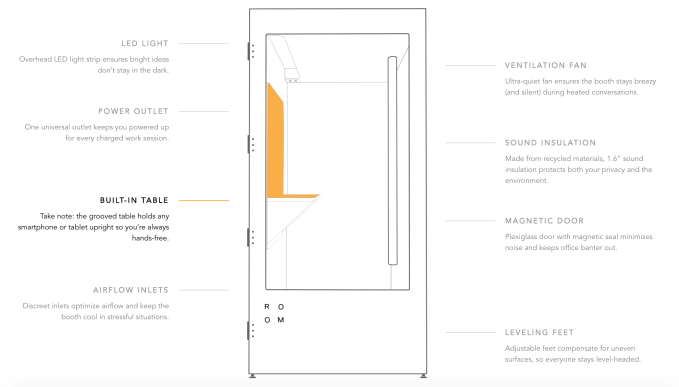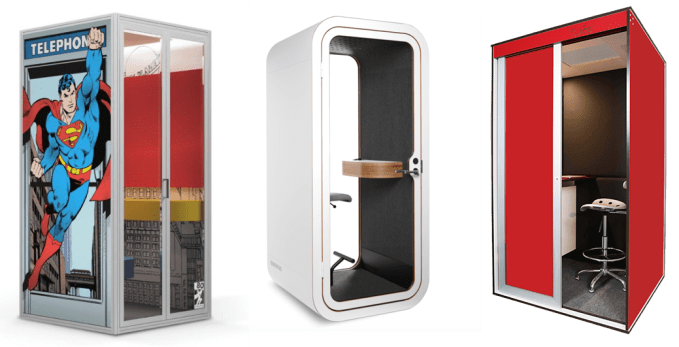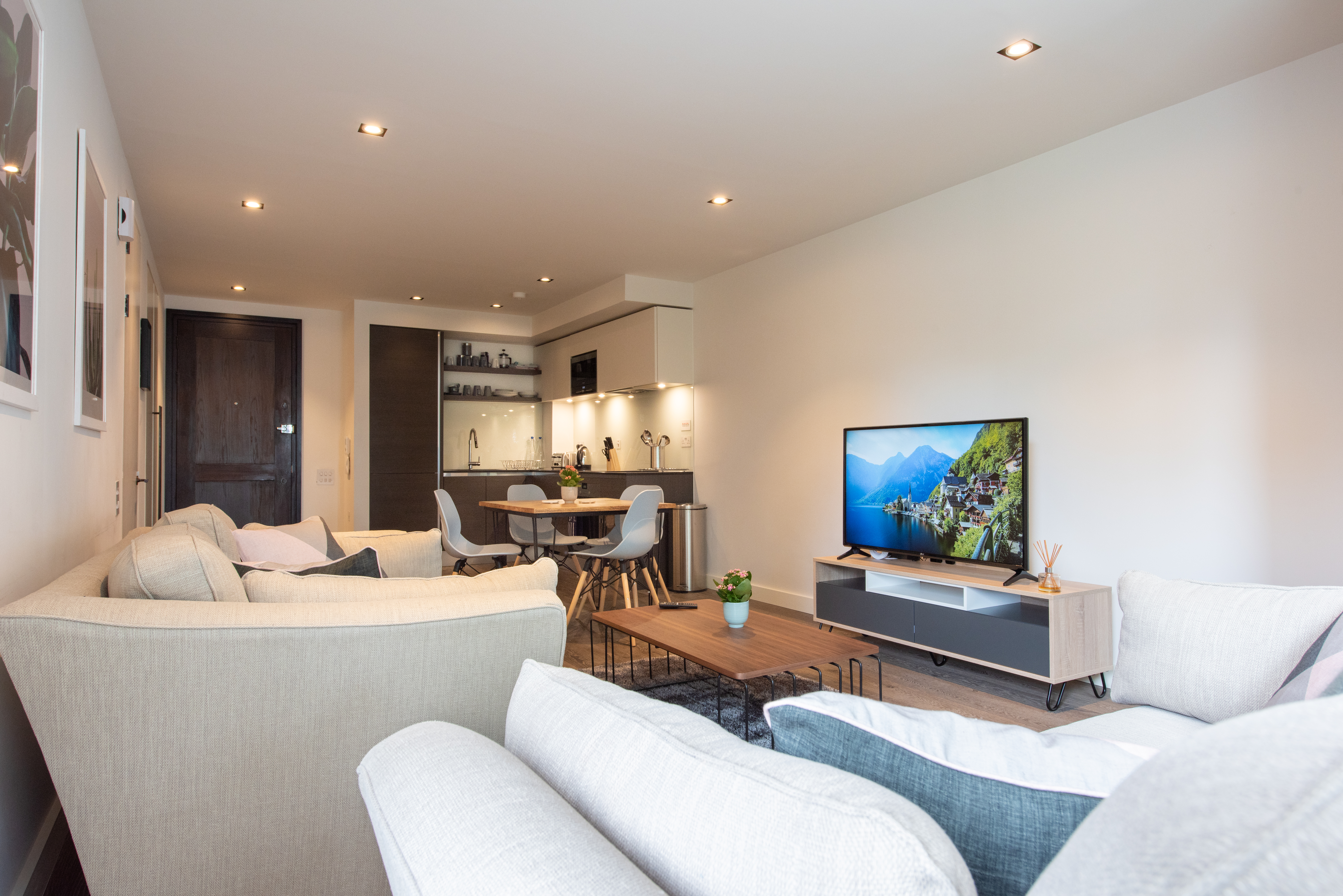Recent Funding
Auto Added by WPeMatico
Auto Added by WPeMatico
Root Insurance, an Ohio-based car insurance startup with a tech twist, said Wednesday it has raised $100 million in a Series D funding round led by Tiger Global Management, pushing the company’s valuation to $1 billion.
Redpoint Ventures, Ribbit Capital and Scale Venture Partners all participated as follow-on investors in this latest round.
The car insurance company, founded in 2015, plans to use the funds to expand into existing markets and make inroads into new states, as well as hire more employees such as engineers, actuaries, claims and customer service to support increased scale.
Root provides car insurance to drivers. Not exactly a new concept. But it establishes the premium customers based on their driving along with other factors. Drivers download the app and take a test drive that typically lasts two or three weeks. Then Root provides a quote that rewards good driving behavior and allows customers to switch their insurance policy. Customers can purchase and manage their policy through the mobile phone Root app.
Root says its approach allows good drivers to save more than 50 percent on their policies compared to traditional insurance carriers.
The company uses AI algorithms to adjust risk and sometimes provide discounts. For example, a vehicle with an advanced driver assistance system that it deems improves safety might receive further discounts.
“Root Insurance is leading digital innovation in U.S. auto insurance,” Lee Fixel, a partner at Tiger Global Management said in a statement. “This industry is ripe for change, and we are excited to invest in a team that has the expertise, vision, and momentum to deliver real results. We look forward to growing our partnership with Root and helping them expand their footprint across the United States.”
The company has grown from its home market of Ohio into 20 other states in the past two years. The company plans to expand to all 50 states and Washington, D.C., by the end of 2019.
Drive Capital and Silicon Valley Bank are also investors in the company.
Powered by WPeMatico
Semmle, a startup that originally spun out of research at Oxford, announced a $21 million Series B investment today led by Accel Partners. It marked the second time Accel has led an investment in the company.
Work-Bench also participated in the round. Today’s investment brings the total to $31 million.
Semmle has warranted this kind of interest by taking a unique approach to finding vulnerabilities in code. “The key idea behind our technology is to treat code as data and treat analysis problems as simple queries against a database. What this allows you to do is very easily encode domain expertise, security expertise or any other kinds of specialist knowledge in such a way it can be easily and automatically applied to large amounts of code,” Pavel Avgustinov, Semmle co-founder and VP of platform engineering told TechCrunch.

Screenshot: Semmle
Once you create the right query, you can continuously run it against your code to prevent the same mistakes from entering the code base on subsequent builds. The key here is building the queries and the company has a couple of ways to deal with that.
They can work with customers to help them create queries, although in the long run that is not a sustainable way of working. Instead, they share queries, and encourage customers to share them with the community.
“What we find is that the great tech companies we work with have the best security teams in the world, and they are giving back what they created on the Semmle platform with other users in an open source fashion. There is a GitHub repository where we publish queries, but Microsoft and Google are doing the same thing,” Oege de Moor, company CEO and co-founder explained.
In fact, the Semmle solution is freely available to open source programmers to use with their applications, and the company currently analyzes every commit of almost 80,000 open source projects. Open source developers can run shared queries against their code or create their own.
They also have a paid version with customers like Microsoft, Google, Credit Suisse, NASA and Nasdaq. They have relied mostly on these strategic partners up until now. With today’s investment they plan to build out their sales and marketing departments to expand their customer base into a wider enterprise market.
The company spun out of research at Oxford University in 2006. They are now based in San Francisco with 60 employees, a number that should go up with this investment. They received an $8 million Series A in 2014 and $2 million seed round in 2011.
Powered by WPeMatico
According to a report by the American Cancer Society, an estimated 266,120 women will be newly diagnosed with breast cancer in the United States this year and (according to a 2016 estimate) can expect to pay between $60,000 and $134,000 on average for treatment and care. But, after hundreds of thousands of dollars and non-quantifiable emotional stress for them and their families, the American Cancer Society still estimates 40,920 women will lose their battle to the disease this year.
Worldwide, roughly 1.7 million women will be diagnosed with the disease yearly, according to a 2012 estimate by The World Cancer Research Fund International.
While these numbers are stark, they do little to fully capture just how devastating a breast cancer diagnosis is for women and their loved ones. This is a feeling that Higia Technologies‘ co-founder and CEO Julián Ríos Cantú is unfortunately very familiar with.
“My mom is a two-time breast cancer survivor,” Cantú told TechCrunch. “The first time she was diagnosed I was eight years old.”
Cantú says that his mother’s second diagnosis was originally missed through standard screenings because her high breast density obscured the tumors from the X-ray. As a result, she lost both of her breasts, but has since fully recovered.
“At that moment I realized that if that was the case for a woman with private insurance and a prevention mindset, then for most women in developing countries, like Mexico where we’re from, the outcome could’ve not been a mastectomy but death,” said Cantú.
Following his mother’s experience, Cantú resolved to develop a way to improve the value of women’s lives and support them in identifying breast abnormalities and cancers early in order to ensure the highest likelihood of survival.
To do this, at the age of 18 Cantú designed EVA — a bio-sensing bra insert that uses thermal sensing and artificial intelligence to identify abnormal temperatures in the breast that can correlate to tumor growth. Cantú says that EVA is not only an easy tool for self-screening but also fills in gaps in current screening technology.
Today, women have fairly limited options when it comes to breast cancer screening. They can opt for a breast ultrasound (which has lower specificity than other options), or a breast MRI (which has higher associated costs), but the standard option is a yearly or bi-yearly mammogram for women 45 and older. This method requires a visit to a doctor, manual manipulation of the breasts by a technologist and exposure to low-levels of radiation for an X-ray scan of the breast tissue.
While this method is relatively reliable, there are still crucial shortcomings, Higia Technologies’ medical adviser Dr. Richard Kaszynski M.D., PhD told TechCrunch.
“We need to identify a real-world solution to diagnosing breast cancer earlier,” said Dr. Kaszynski. “It’s always a trade-off when we’re talking about mammography because you have the radiation exposure, discomfort and anxiety in regards to exposing yourself to a third-party.”
Dr. Kaszynski continued to say that these yearly or bi-yearly mammograms also leave a gap in care in which interval cancers — cancers that begin to take hold between screenings — have time to grow unhindered.
Additionally, Dr. Kaszynski says mammograms are not highly sensitive when it comes to detecting tumors in dense breast tissue, like that of Cantú’s mom. Dense breast tissue, which is more common in younger women and is present in 40 percent of women globally and 80 percent of Asian women, can mask the presence of tumors in the breast from mammograms.

Through its use of non-invasive, thermal sensors EVA is able to collect thermal data from a variety of breast densities that can enable women of all ages to more easily (and more frequently) perform breast examinations.
Here’s how it works:
To start, the user inserts the thermal sensing cups (which come in three standard sizes ranging from A-D) into a sports bra, open EVA’s associated EVA Health App, follow the instructions and wait for 60 minutes while the cup collects thermal data. From there, EVA will send the data via Bluetooth to the app and an AI will analyze the results to provide the user with an evaluation. If EVA believes the user may have an abnormality that puts them at risk, the app will recommend follow-up steps for further screening with a healthcare professional.
While sacrificing your personal health data to the whims of an AI might seem like a scary (and dangerous, if the device were to be hacked) idea to some, Cantú says Higia Technologies has taken steps to protect its users’ data, including advanced encryption of its server and a HIPAA-compliant privacy infrastructure.
So far, EVA has undergone clinical trials in Mexico, and through these trials has seen 87.9 percent sensibility and 81.7 percent specificity from the device. In Mexico, the company has already sold 5,000 devices and plans to begin shipping the first several hundred by October of this year.
And the momentum for EVA is only increasing. In 2017, Cantú was awarded Mexico’s Presidential Medal for Science and Technology and so far this year Higia Technologies has won first place in the SXSW’s International Pitch Competition, been named one of “30 Most Promising Businesses of 2018” by Forbes Magazine Mexico and this summer received a $120,000 investment from Y Combinator.
Moving forward, the company is looking to enter the U.S. market and has plans to begin clinical trials with Stanford Medicine X in October 2018 that should run for about a year. Following these trials, Dr. Kaszynski says that Higia Technologies will continue the process of seeking FDA approval to sell the inserts first as a medical device, accessible at a doctor’s office, and then as a device that users can have at home.
The final pricing for the device is still being decided, but Cantú says he wants the product to be as affordable and accessible as possible so it can be the first choice for women in developing countries where preventative cancer screening is desperately needed.
Powered by WPeMatico
Food delivery startup DoorDash announced this afternoon that it has raised $250 million, just five months since the company announced a $535 million round.
Why raise more money so soon? CEO Tony Xu told Axios that he wasn’t actively looking for additional investment, but was open to investor interest because it could help the company expand more quickly. (Maybe he’ll have more to say about those plans at Disrupt SF next month.)
The new funding was led by Coatue Management and DST Global. It sounds like the terms were pretty appealing too, with the valuation growing from $1.4 billion to $4 billion.
In a blog post, the company said it’s had a good 2018, with deliveries increasing 250 percent year-over-year, restaurant chains like Chipotle and IHOP signing up and last week’s launch of the DashPass subscription service, where you can pay $9.99 per month to get unlimited free deliveries.
“As we grow, we will stay true to our values and our mission of connecting people with possibility — and, trust us, we’re just getting started,” DoorDash wrote.
Powered by WPeMatico
Noisy open offices don’t foster collaboration, they kill it, according to a Harvard study that found the less-private floor plan led to a 73 percent drop in face-to-face interaction between employees and a rise in emailing. The problem is plenty of young companies and big corporations have already bought into the open office fad. But a new startup called ROOM is building a prefabricated, self-assembled solution. It’s the IKEA of office phone booths.

The $3,495 ROOM One is a sound-proofed, ventilated, powered booth that can be built in new or existing offices to give employees a place to take a video call or get some uninterrupted time to focus on work. For comparison, ROOM co-founder Morten Meisner-Jensen says, “Most phone booths are $8,000 to $12,000. The cheapest competitor to us is $6,000 — almost twice as much.” Though booths start at $4,500 from TalkBox and $3,995 from Zenbooth, they tack on $1,250 and $1,650 for shipping, while ROOM ships for free. They’re all dividing the market of dividing offices.
The idea might seem simple, but the booths could save businesses a ton of money on lost productivity, recruitment and retention if it keeps employees from going crazy amidst sales call cacophony. Less than a year after launch, ROOM has hit a $10 million revenue run rate thanks to 200 clients ranging from startups to Salesforce, Nike, NASA and JP Morgan. That’s attracted a $2 million seed round from Slow Ventures that adds to angel funding from Flexport CEO Ryan Petersen. “I am really excited about it since it is probably the largest revenue-generating company Slow has seen at the time of our initial Seed stage investment,” says partner Kevin Colleran.

“It’s not called ROOM because we build rooms,” Meisner-Jensen tells me. “It’s called ROOM because we want to make room for people, make room for privacy and make room for a better work environment.”
You might be asking yourself, enterprising reader, why you couldn’t just go to Home Depot, buy some supplies and build your own in-office phone booth for way less than $3,500. Well, ROOM’s co-founders tried that. The result was… moist.
Meisner-Jensen has design experience from the Danish digital agency Revolt that he started before co-founding digital book service Mofibo and selling it to Storytel. “In my old job we had to go outside and take the call, and I’m from Copenhagen, so that’s a pretty cold experience half the year.” His co-founder Brian Chen started Y Combinator-backed smart suitcase company Bluesmart, where he was VP of operations. They figured they could attack the office layout issue with hammers and saws. I mean, they do look like superhero alter-egos.

Room co-founders (from left): Brian Chen and Morten Meisner-Jensen
“To combat the issues I myself would personally encounter with open offices, as well as colleagues, we tried to build a private ‘phone booth’ ourselves,” says Meisner-Jensen. “We didn’t quite understand the specifics of air ventilation or acoustics at the time, so the booth got quite warm — warm enough that we coined it ‘the sweatbox.’ ”
With ROOM, they got serious about the product. The 10-square-foot ROOM One booth ships flat and can be assembled in less than 30 minutes by two people with a hex wrench. All it needs is an outlet to power its light and ventilation fan. Each is built from 1088 recycled plastic bottles for noise cancelling, so you’re not supposed to hear anything from outside. The box is 100 percent recyclable, plus it can be torn down and rebuilt if your startup implodes and you’re being evicted from your office.
The ROOM One features a bar-height desk with outlets and a magnetic bulletin board behind it, though you’ll have to provide your own stool. It’s actually designed not to be so comfy that you end up napping inside, which doesn’t seem like it’d be a problem with this somewhat cramped spot. “To solve the problem with noise at scale you want to provide people with space to take a call but not camp out all day,” Meisner-Jensen notes.

Booths by Zenbooth, Cubicall and TalkBox (from left)
Couldn’t office managers just buy noise-cancelling headphones for everyone? “It feels claustrophobic to me,” he laughs, but then outlines why a new workplace trend requires more than headphones. “People are doing video calls and virtual meetings much, much more. You can’t have all these people walking by you and looking at your screen. [A booth is] also giving you your own space to do your own work, which I don’t think you’d get from a pair of Bose. I think it has to be a physical space.”
But with plenty of companies able to construct physical spaces, it will be a challenge for ROOM to convey the subtleties of its build quality that warrant its price. “The biggest risk for ROOM right now are copycats,” Meisner-Jensen admits. “Someone entering our space claiming to do what we’re doing better but cheaper.” Alternatively, ROOM could lock in customers by offering a range of office furniture products. The co-founder hinted at future products, saying ROOM is already receiving demand for bigger multi-person prefab conference rooms and creative room divider solutions.

The importance of privacy goes beyond improved productivity when workers are alone. If they’re exhausted from overstimulation in a chaotic open office, they’ll have less energy for purposeful collaboration when the time comes. The bustle could also make them reluctant to socialize in off-hours, which could lead them to burn out and change jobs faster. Tech companies in particular are in a constant war for talent, and ROOM Ones could be perceived as a bigger perk than free snacks or a ping-pong table that only makes the office louder.
“I don’t think the solution is to go back to a world of cubicles and corner offices,” Meisner-Jensen concludes. It could take another decade for office architects to correct the overenthusiasm for open offices despite the research suggesting their harm. For now, ROOM’s co-founder is concentrating on “solving the issue of noise at scale” by asking, “How do we make the current workspaces work in the best way possible?”
Powered by WPeMatico
Adam Pittenger knows that moving is tough — after all, he said he’s moved eight times in the past seven years.
Pittenger said that there are several reasons why the process can be stressful, like the fact that most people aren’t experts on moving, since they don’t do it as often as him (seriously, eight times is crazy). Plus, there’s just an enormous amount of planning and coordination required, whether it’s hiring movers, buying packing materials or putting your things into storage.
So Pittenger decided to make the whole process a lot easier by founding Moved. Moving, he said, “doesn’t have to be that stressful,” because with Moved, you get “a personal assistant coordinating all the aspects of your move.”
Moved is announcing that it’s raised $3.2 million in seed funding from Lowe’s Ventures (the early-stage investment arm of the home improvement giant), FJ Labs, AngelPad, Real Estate Technology Ventures and others.
To sign up for Moved, you fill out a questionnaire about where you’re moving to and from, and what kinds of services you need. Moved (available via desktop web or mobile app) will then reach out to movers and provide you with multiple quotes from which you can choose.

And while, as Pittenger put it, “the immediate thing you need to do is book the movers,” Moved offers a broader range of services, like ordering packing supplies, helping you donate stuff you don’t need anymore, finding a storage unit, updating your address, finding painters and more.
Moving can also be expensive, so the company has announced a partnership with Affirm, where Affirm’s financing will allow you to break up the moving costs into monthly payments.
To be clear, Moved isn’t doing the moving itself — instead, it’s basically connecting you to a marketplace of movers and other service providers. Pittenger said the company is “very strict about the suppliers and the vendors” and will remove them if customers aren’t happy with their experience.
Moved is managing all of this through a real, human assistant who can help you figure out what you need, handle the scheduling and serve as a “consumer advocate” who ensures that you’re not getting ripped off.
Pittenger said the service is free for consumers, with a fee charged to vendors at the time of booking. And it’s available throughout the United States.
Powered by WPeMatico
Lyvly, a London-based startup that offers what might best be described as a members-based shared living and rental service, has raised $4.6 million in Series A funding. Leading the round is Mosaic Ventures, while Greg Marsh, who co-founded Onefinestay, has joined the burgeoning company as chairman and investor.
The latest take on how to improve the experience for “generation rent” in sprawling cities like London, Lyvly is at its most basic a two-sided marketplace that helps renters find high-quality shared living accommodations and landlords find good tenants. However, it goes far beyond simply matching supply and demand for house shares.
Not only are properties fully managed — including providing tenant services such as managing household bills, replacing consumables and cleaning — but at the heart of it all is the Lyvly community platform, which treats Lyvly renters as members within a network of “like-minded individuals who share a passion for shared living.” And, as wishy-washy as that sounds, there is no doubt that city living is often devoid of community, and in London especially it can be difficult to meet new people.
“Renting is often not a pleasant experience, and living in cities can be lonely and stressful,” says co-founder and CEO Philip Laney. “Moving into your new apartment, sorting out furniture and utilities, and then trying to connect with busy people around you all whilst working long hours in a transient economy are frustrations many of us have experienced. We are confronting three problems for renters in the city: their desire for community, convenience and affordability.”
Laney says the current way people rent shared accommodations is also painful for landlords, who don’t have consistency and control over the quality of their tenants, and often pay high fees to a middle-person and struggle with vacancy rates. “We provide them guaranteed income with no voids and no fees, and a genuinely positive social impact,” he says.

For renters, Lyvly operates a little like a members club. Once you’ve applied to join the community, you have a call with a member of the Lyvly team to learn more about your “life stage and values.” “We are people, not property first. So we establish what you’re seeking from your Lyvly move and whether you are keen to actively participate in the Lyvly community and share your life, not just spaces,” says Laney.
Next, you are given profiles of the members (and prospective housemates) you will be meeting with, and they are sent your profile and an overview as to why you are well-matched. You then meet each other, and if you like each other, you can apply online to the membership committee, which is made up of the most active Lyvly members and the team. This includes submitting your bio and stating why you want to be part of Lyvly, and what you would bring to the community.
Adds Laney: “Once you’re in, we then guide you through the whole moving process, taking care of everything and removing any usual stresses that come from moving to a new place in London. You are introduced to other members in the area who have similar interests and values and other members reach out to you directly to invite you to other activities they’re hosting. We also regularly host events and actively support members to engage with each other and give value to the community.”
Lyvly’s target tenants are 25-35-year-olds who are looking for single occupancy. Laney says that’s because they are at similar life stages to each other and this is where the startup can make a meaningful difference. “We really care about being something to someone, rather than everything to no one. In time however, we will be able to expand Lyvly into different community groups,” he says.
Landlords using the platform range from individuals who are first-time owners to some of London’s biggest property companies.
Asked who Lyvly competes with, he cites the grey and black economy of shared housing and “dodgy landlords.” Technically the company is also competing with estate agents, although it is open to working with them to help find better tenants for their landlords.
Meanwhile, don’t confuse the startup for co-living, build-to-rent developers who “put property first” and aim to profit from the development of assets. In contrast, Lyvly makes money from the managed services it provides and is not developing new property but renting out existing housing stock.
“We believe people like living in existing houses and apartments and what we need to do is create a community around that. It’s not the configuration of the spaces that need changing, but how people interact inside and outside of them,” says Laney, adding that the use of existing housing infrastructure also means that Lyvly is potentially a lot more scalable.
Along with Laney, the startup’s other co-founders are Dario Favoino and Siraj Khaliq. Both Laney and Favoino have a 10-year background in real estate investment and property management at Deutsche Bank and Realstar. And in case you aren’t keeping up, Khaliq is a partner at London VC firm Atomico and was previously CTO and co-founder of Silicon Valley startup Climate Corporation, which exited in 2013 for more than $1.1 billion.
Powered by WPeMatico
I’m not immune to compliments, and Spencer Gerrol, founder and CEO of Spark Neuro, offered a real winner as he demonstrated his technology.
“I love your brain,” he told me. This was after the startup’s vice president of research Ryan McGarry had strapped sensors to my fingers and head, then showed me an intense movie clip, with my attention level and emotional response displayed on a screen for all to see.
That, in miniature, is what Spark Neuro does: It helps companies study the audience response to things like ads, movies and trailers.
The goal is to replace things like focus groups and surveys, which Gerrol said are subject to a variety of biases, including group pressure and the desire to give the answer that you think the researcher wants to hear.
For example, he showed me a Mr. Clean ad that had performed poorly among men in focus groups. Spark Neuro, in contrast, found that it actually had “beautiful performance” among both men and women, and it ended up being one of the best-received ads at last year’s Super Bowl. (Apparently the guys just didn’t want to admit that they enjoyed watching a seductive cartoon man.)

We’ve also written about startups that try to measure ad effectiveness using technology like eye tracking and studying facial expressions. Gerrol said those are valuable data points, and indeed, they’re part of Spark Neuro’s research. But they have their limitations, which is why the company also looks at brain and electrodermal activity.
Gerrol highlighted the EEG data (i.e. data about the electrical activity in your brain) as offering “such richness and such depth.” The challenge is that “the data is incredibly noisy.” So Spark Neuro has developed tools to automatically remove the noise and make the data easy to understand.
At the same time, it’s not just relying on technology — Gerrol said his researchers also do one-on-one interviews with participants afterwards to get a better understanding of their responses.
“The most important thing, by 100 fold, is the intellectual property around the algorithms,” he added. “The algorithms take a mess of data that’s meaningless to the human eye and turn it into something you can just understand as a marketing executive.”
My own readings looked daunting at first, but they quickly became comprehensible as Gerrol walked me through them, showing me where my attention and emotions spiked.
Spark Neuro is already working with a long list of clients that includes Anheuser-Busch, General Motors, Hulu, JetBlue, Paramount and Walmart. It’s also announcing that it’s raised a $13.5 million Series A led by Thiel Capital, with participation from Will Smith (yes, that Will Smith) and former Disney CEO Michael Eisner.
Eventually, Gerrol suggested the technology could be applied in other ways, like measuring student attention in the classroom.
“There’s a million applications,” he said. “We’re very focused on being a dominating force in a discrete industry, but it’s also important to our future to set ourselves up for further applications.”
Powered by WPeMatico
Audius wants to cut the middlemen out of music streaming so artists get paid their fair share. Coming out of stealth today led by serial entrepreneur and DJ Ranidu Lankage, Audius is building a blockchain-based alternative to Spotify or SoundCloud.
Users will pay for Audius tokens or earn them by listening to ads. Their wallet will then pay out a fraction of a cent per song to stream from decentralized storage across the network, with artists receiving roughly 85 percent — compared to roughly 70 percent on the leading streaming apps. The rest goes to compensating whomever is hosting that song, as well as developers of listening software clients, one of which will be built by Audius.
Audius plans to launch its open-sourced product in beta later this year. But it’s already found some powerful investors that see SoundCloud as vulnerable to the cryptocurrency revolution. Audius has raised a $5.5 million Series A led by General Catalyst and Lightspeed, with participation from Kleiner Perkins, Pantera Capital, 122West and Ascolta Ventures. They’re betting that Audius’ token will grow in value, making the stockpile it keeps worth a fortune. It could then sell chunks of its tokens to earn revenue instead of charging artists directly.

Audius co-founders (from left): head of product Forrest Browning, CEO Ranidu Lankage, CTO Roneil Rumburg
“The biggest problem in the music industry is that streaming is taking off and artists aren’t necessarily earning a lot of money. And it can take three months, or up to 18 months for unsigned artists, to get paid for streams,” says Lankage. “That’s what crypto really solves. You can pay artists in near real-time and make it fully transparent.”
The big question will be whether Audius can use the token economy to crack the chicken-and-egg problem of getting its first creators and listeners on a platform that might be less functionally robust than its traditional competitors. There are a lot of moving parts to decentralize, but there are also plenty of disgruntled musicians out there waiting for something better.
Most startup guys don’t have Billboard charting singles on their bio, but Lankage does. Born in Sri Lanka, his hip-hop songs in his native tongue of Sinhalese were the first of the language to be played on the BBC and MTV. He got signed to Sony and even went platinum, but left the label seeking greater control over his work. After going to Yale, he applied his music business knowledge to build a Reddit for dance music called The Drop with Twitch’s Justin Kan back in 2015.
The two teamed up again on a video version of Q&A app Quora called Whale, but that fizzled out too. Lankage’s next venture Polly, a polling tool built as a complement to Snapchat, inspired the now super-popular Instagram Stories polls and questions stickers. But after an acqui-hire by Reddit fell through, he returned to his first love: music.
“I’ve always been passionate about building tools for creators,” says Lankage. But this time, he wanted to focus on helping them turn their art into a profession. He teamed up with CTO Roneil Rumburg, an engineering partner at Kleiner Perkins who’d build a crypto wallet called Backslash, and head of product Forrest Browning, who’d sold his software metering startup StacksWare to Avi Networks.
Their goal is to build a blockchain streaming music service where listeners don’t have to understand blockchains. “A user wouldn’t even know that they have a wallet,” says Rumburg. They’ll just hear an ad every once in a while, get a subscription, or pay per stream. Since Audius is open sourced, developers will be able to build their own listening clients on top, which could specialize in discovery of certain types of music or offer their own payment schemes.

“I have known Ranidu, Forrest and Roneil for a long time, and have always been impressed with their ability to blend art, technology and business together,” says investor Niko Bonatsos of General Catalyst. “In Audius, they bring together all three skills, with a deep technical heart and a compelling solution for a very big marketplace.”
For starters, Audius is focusing on signing up independent electronic musicians. These are the types that might be popular on SoundCloud but actually have to pay for hosting there while not getting much back due to the platform’s weak monetization options. Don’t expect U2 and Ariana Grande on Audius, at least not yet. But the startup could differentiate by offering access to content you can’t find elsewhere.
To get artists on board, Lankage tells me Audius plans “to use token incentives.” Those willing to jump on first before there are many listeners could get a bonus allotment of tokens that might be worth more if they help popularize the service. And where artists go, their fans will follow. Audius is hoping artists will share its links first because that’s where they’ll earn the most money.
 Audius has also lined up a legion of big-name advisors to help it develop its blockchain product and artist relationships. Those include Augur co-founder Jeremy Gardner, EDM artist 3LAU, EA co-founder Bing Gordon and more it can’t announce just yet.
Audius has also lined up a legion of big-name advisors to help it develop its blockchain product and artist relationships. Those include Augur co-founder Jeremy Gardner, EDM artist 3LAU, EA co-founder Bing Gordon and more it can’t announce just yet.
The linchpin of Audius will be the user experience. If the system feels too complicated, listeners and artists will stay elsewhere. A DJ might earn more per stream from Audius, but if Spotify or SoundCloud offer better ways for fans to subscribe to them and generate more plays long-term, they’ll still direct supporters there. But if Audius can hide the nerdy bits while solving the music industry’s problems, it has the potential to be one of the first mainstream consumer blockchain projects that treats the tech as a utility, not just a new stock market to bet on.
Powered by WPeMatico
Chinese AI startup Tianrang has raised a $26 million (RMB180 million) funding round from China’s Gaorong Capital and co-lead CMB International Capital. Other investors included Ziniu Fund and Chinese fintech company Wacai. In 2016, the company raised an angel round led by Gaorong Capital and participated in by Shanghai Jindi Investment Management Ltd.
Based on deep learning and other AI technology, Tianrang provides data analysis and smart solutions for enterprises. It was founded by in 2016 by Xu Guirong, former director of Alibaba’s Ali Cloud and chief scientist at Alibaba’s cloud platform Alimama. So no slouch on the AI front.
Tianrang claims to be able to automatically collect and analyze marketing trends and purchase-related information on Alibaba’s e-commerce platform, allowing vendors to make better marketing decisions.
Wang Hongbo, chief investment officer at CMB International Capital says: “With algorithm and AI, Tianrang lowers the requirement of complex machine decision-making and makes it accessible and scalable for commercial use.”
Tianrang also plans to set up a project to apply machine learning to the urban development of cities, led by Jessie Li, a professor at the College of Information Sciences and Technology of Pennsylvania State University.
Powered by WPeMatico